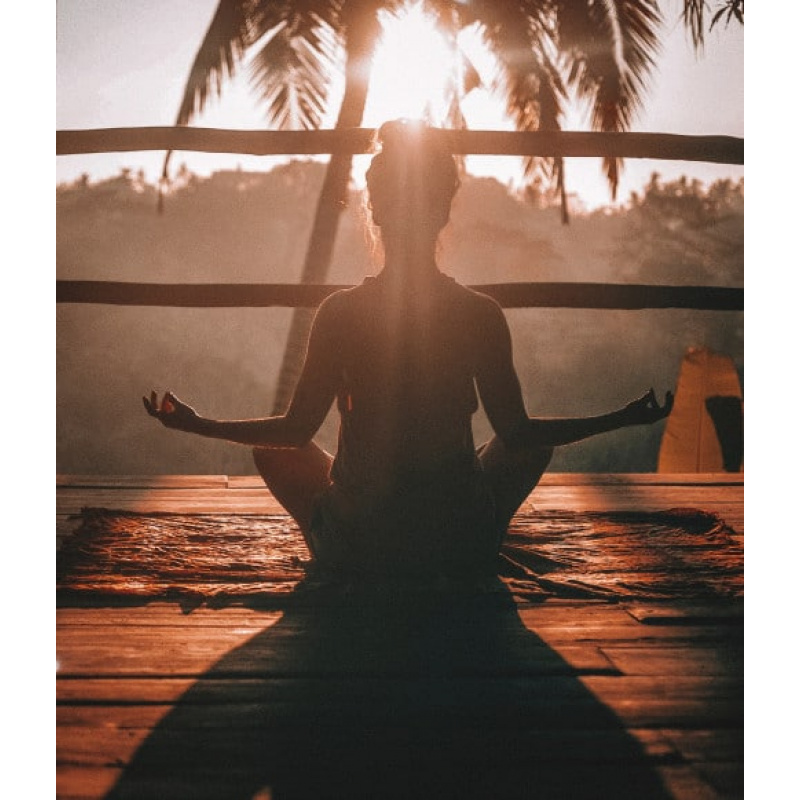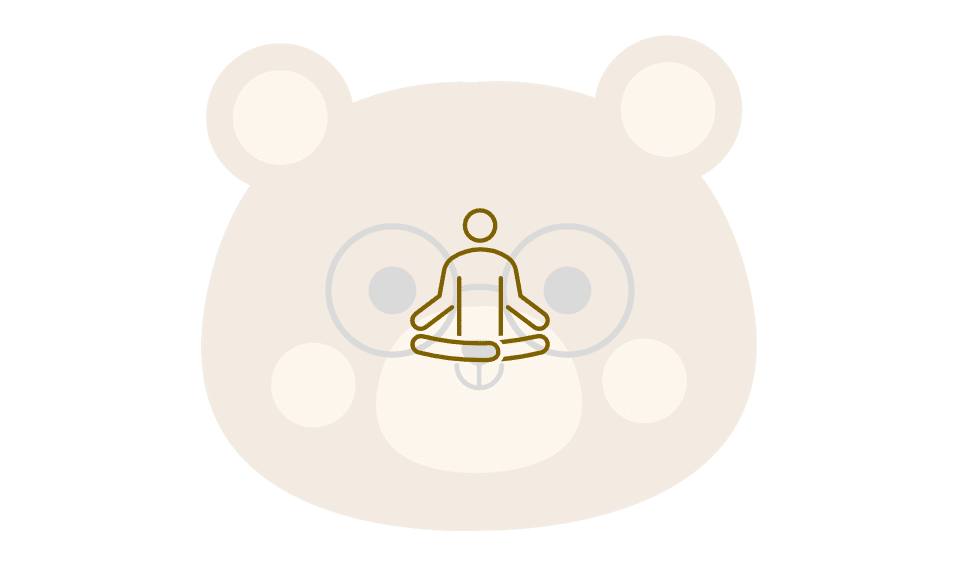
Learn Meditation Online: Guide & Online Course Overview
April 15, 2024
Learn English Online: Guide & Online Course Overview
April 15, 2024The online yoga course is becoming increasingly popular. No matter where you are, you can start practicing yoga immediately with just a simple mat. In addition to aiming to physically strengthen the body, yoga is also a practice that can help resolve internal mental conflicts. Here, you’ll find a comparison of learn yoga online providers, along with useful information to help you choose the right course.
|
Gymondo – Online fitness
Gymondo is one of the most popular online fitness platforms in Germany and therefore definitely worth a test. The platform has a variety of different fitness courses, which in turn are made up of different workouts. Depending on the goal of the course, these can be aimed at building muscle or losing weight, for example. The courses are run by well-known and professional trainers. |
7 €
|
||
|
40 €
|
|||
|
20 €
|
|||
|
20 €
|
Yoga online course – Connecting body, mind, and soul
Learning yoga online is a popular way to find relaxation within the comfort of your own home while simultaneously strengthening your body. Yoga has become increasingly popular worldwide in recent years because it provides an opportunity to combine physical workouts with mental rejuvenation. Moreover, every yogi will attest that regular practice not only enhances physical flexibility but also allows you to connect with your soul.
Yoga originated around 1,500 B.C. in the region that is now India. Originally, yoga primarily consisted of breathing exercises (Pranayama), meditation, and a philosophically or religiously characterized way of life as a path to self-realization. The physical postures (Asana), which most people in the Western world associate with yoga, actually represent only a small part of the yoga tradition. Additionally, there are numerous different styles, teachers, and online formats ranging from Power to Kundalini yoga, allowing beginners or advanced yogis to practice on their living room mats.
Here, you’ll learn why an online yoga course is right for you, which yoga style suits you best, and what equipment you’ll need. You’ll also find valuable information about the structure and costs of an online yoga course, as well as how practicing yoga during the time of COVID-19 can strengthen you internally.
Is an online course right for me?
Theoretically, anyone can participate in an online yoga course. Whether children or adults, beginners or advanced practitioners, there’s a suitable online yoga class for everyone. You should definitely try out a yoga course if one or more of the following points apply to you:
- You’re looking for a sport that focuses not only on exertion and weight loss but also provides mental balance.
- You want to strengthen your deep muscles and increase flexibility throughout your body.
- You prefer a form of exercise that doesn’t require expensive equipment and can be practiced anytime, anywhere.
- You want to boost your self-confidence, reduce stress, and enhance mindfulness in your daily life.
Nevertheless, there are some circumstances in which you should exercise caution when it comes to yoga. Pregnant women or new mothers, for example, should only take part in special pre- or postnatal yoga classes.
Click here for our online pregnancy yoga courses.
And here you can find our online postnatal courses for the time after pregnancy.
However, there are circumstances where you should exercise caution with yoga. Physical limitations or health conditions such as cardiovascular disease or a herniated disc may require special precautions during yoga practice. In any case, it’s essential to discuss your participation in online yoga classes with your doctor before rolling out your mat.
How can I benefit from an online yoga course during the COVID-19 pandemic?
Yoga is an excellent method for strengthening both the body and the mind. Studies have even shown that practicing this ancient Indian tradition reduces individual stress levels and boosts the body’s immune system. In short, practicing yoga leads to a healthier lifestyle!
It’s no wonder, then, that since the outbreak of the COVID-19 pandemic in the spring of 2020, even more people have become interested in yoga courses. However, yoga studios had to close their doors during the lockdown and have since been allowed to operate only under strict hygiene regulations and with reduced class sizes. Yet, despite these precautions, some yogis may not feel entirely comfortable knowing they could potentially endanger themselves or others while practicing.
Therefore, the yoga world has responded by going online! The selection of online yoga courses has multiplied since the beginning of 2020, as many teachers and studios shifted their classes to the digital realm. Additionally, specialized online providers and apps have entered the market. Whether during a lockdown or not, thanks to this diverse offering, you have the opportunity to practice any yoga style you like online, around the clock.
Yoga online course or yoga studio – Here are the pros and cons!
Practicing yoga online in a virtual studio or at a local yoga studio? Both methods have their own advantages and disadvantages. The advantage of an online yoga course is that you can practice yoga at any time of your choosing, without having to adhere to a studio’s opening hours. Additionally, you have more privacy at home and don’t have to worry about the judgment of others if your yoga outfit isn’t the latest fashion or if you’re still mastering a particular asana. In times of COVID-19, you can also be assured that your online yoga course is always open, allowing you to adhere to social distancing and hygiene rules without any potential risks.
One downside of online yoga is an advantage of a local yoga studio – the presence of a teacher who can correct your positions and provide valuable tips on your posture. However, modern streaming options now make this possible online as well. In a studio, you also experience a special atmosphere and have the opportunity to interact with others. But if you buy yourself a nice candle and some fragrant incense sticks, you can create a cozy atmosphere at home too. Many virtual studios also offer the opportunity for interaction within a vibrant online community.
Which online course style is right for me?
The range of different yoga styles is vast, and there’s a suitable online course for each variant. But how do you know which style is right for you?
The classic yoga style is the somewhat calmer and more static Hatha Yoga. In addition, there’s the energetic, powerful Ashtanga series or the flowing, more flexible Vinyasa Yoga. If you’re looking for relaxation, Yin Yoga might be right for you. If you’re seeking a more spiritual yoga practice, Kundalini might appeal to you.
Apart from these basic yoga styles, there are many other variations such as Power Yoga, Anusara Yoga, Jivamukti Yoga, or Forrest Yoga, to name just a few. To find out what really suits you, trying it out is better than just studying it! Many online yoga courses offer you the opportunity to take a trial class or a trial subscription.
During this time, you can take the opportunity to get a feel for the yoga style at your own pace. After a few trial classes, you’ll quickly realize which style feels right for you. And if you find out you’ve made a mistake, you can cancel your membership or try another variant. Especially apps or online platforms usually offer a wide range of different courses.
What equipment do I need for an online yoga course?
The beauty of yoga is that you need very little equipment! The essentials include just a yoga mat and comfortable clothing that allows you to move freely. When it comes to yoga mats, make sure to choose a non-slip mat that lies smoothly on the floor. Traditional gym mats usually won’t suffice, so it’s wise to invest some money in a specialized yoga mat.
While men often find it more comfortable to practice yoga in breathable, looser pants, most women prefer yoga leggings. Above all, you should feel comfortable in your “yoga attire” and be able to move flexibly. Additionally, for more challenging asanas or specific balance exercises, it’s important that the fabric surface is non-slip.
Apart from this basic equipment, you may also consider getting a strap and a block. These two props can be used in some asanas if your strength or flexibility isn’t sufficient to perform the full pose. A good yoga teacher will take these limitations into account and instruct you on how to use props to bridge the gap.
Finally, find a comfortable space where you can practice undisturbed and have a smart TV, PC, tablet, smartphone, or laptop with a stable internet connection available.
How does an online course work?
The format of an online yoga course varies depending on the provider’s concept, the style of yoga, and your level of experience. Generally, there are options to watch pre-recorded videos or join a live-stream in a virtual studio. Some providers also offer beginner courses where you can familiarize yourself with the basics of yoga.
Many online yoga courses offer full yoga sessions lasting 60 or 90 minutes. However, shorter sessions or exercises targeting specific parts of the body, such as shoulders or hips, are also available. Your advantage is that the selection is so vast that you’ll definitely find the right online yoga course based on your fitness level, the time available to you, or the specific body part you want to focus on!
The process itself is relatively similar. You either log in with your credentials on an online platform or in an app, choose the online yoga course you want to take, and get started. Alternatively, your yoga studio or teacher may send you a link to a closed group within an online conferencing tool like Skype or Zoom, allowing you to participate live in the yoga sessions.
Cost of online yoga courses
Online, you can find a variety of payment models for yoga courses, ranging from free classes to package prices and monthly subscriptions. While advanced practitioners can benefit from free yoga videos on major video platforms, it’s generally more advisable for beginners to participate in well-structured and paid courses. However, experienced yogis will also find that paid offerings often provide better quality instruction.
The suitable payment model for you often depends on your preferred type of instruction. Individual yoga sequences or classes offered as video streams or downloads are typically priced individually. However, more commonly, you’ll find monthly subscription options offered by many yoga apps or studios that have transitioned their programs to the digital world. Depending on whether it’s personalized yoga classes or offerings for a large number of subscribers, prices can range from under 10 euros monthly to around 15 euros per online yoga session.
Are there free yoga online courses available?
Those looking to practice yoga long-term and receive valuable instruction should consider signing up for a trial subscription or a basic online yoga course. These are usually free and provide a deep insight into the respective online course. There are many introductions to yoga available on the internet. Platforms like YouTube and others can provide a first impression. However, it generally makes sense to take a yoga course with a certified instructor. While this usually costs some money, you’ll receive comprehensive support and professional teaching material in return.
Yoga online course – More than just downward dog!
Learning yoga online is a great option for both beginners and advanced practitioners, allowing you to practice yoga comfortably from home and at your own pace. Regardless of which yoga style, online yoga course, or payment model you choose, the most important thing is that you feel comfortable during the yoga session!
Yoga is not a competitive sport – you should always listen to your body and avoid exercises that strain you. Since there is no teacher present in your living room during an online yoga course to correct your posture, it’s even more important for you to observe yourself closely. As the saying goes: In yoga, it’s not about touching your toes, but about what you learn on the way down. Namaste!










